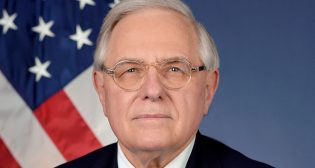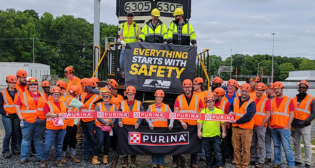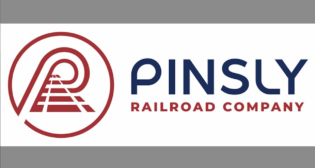
Crew-Size Edicts Threaten Small Railroads
Written by Frank N. Wilner, Capitol Hill Contributing EditorWATCHING WASHINGTON, RAILWAY AGE JUNE 2023 ISSUE: How many crew members are required to operate a freight train safely? The two federal agencies most qualified to answer objectively are in doubt.
The National Transportation Safety Board (NTSB) said “there is insufficient data to demonstrate that accidents are avoided by having a second qualified person in the [locomotive] cab.” The Federal Railroad Administration (FRA) said it lacked “reliable or conclusive statistical data” linking crew size to safety. Yet 13 states, relying primarily on anecdotal evidence, have enacted laws mandating two-person crews, with the list expected to grow owing to labor union lobbying.
While these state laws do not currently affect Class I railroads with collective bargaining agreements (CBAs) specifying, for now, two-person crews, many CBAs are ripe for renegotiation. The more immediate threat of state law mandates is to the economic health of the nation’s 600-plus Class II (regional) and Class III (short line) railroads. The American Short Line and Regional Railroad Association estimates 400 small railroads now operate some trains engineer-only in the cab, with 100 not using dedicated ground-based support (conductor in a following truck, voice electronics or remote control).
Requiring small railroads to hire a second crew member absent compelling safety justification would illogically erode already thin profit margins and flout public policy intended to foster and preserve private-sector rail operations in areas otherwise served only by truck. Small railroads succeed only through diligent cost control and operational flexibility as they lack the market power and economies of scale and density enjoyed by Class I’s.
Forcing small railroads to hire redundant employees risks discouraging future capital investment that in the past rehabilitated thousands of miles of dilapidated track jettisoned by Class I’s, and would undermine a competitive small-railroad freight-rate structure essential to retaining and growing carload traffic.
Significantly, small railroads, responsible for maintenance and renewal of their privately owned rights-of-way, compete against truckers utilizing government constructed and maintained highways, and who underpay their user-charge cost responsibility for the pavement and bridge damage big rigs cause.
Regional Indiana Rail Road (INRD), which also operates in Illinois and has one-person crew operations with an exemplary safety record, successfully challenged in federal court the Illinois crew size mandate, which may explain why other states haven’t enforced their crew size laws. [Indiana Rail Road v. Illinois Commerce Commission, 576 F. Supp. 3d 571 (N.D. Ill. 2021)].
INRD contended that the Illinois statute is preempted by federal laws—the 1970 Federal Rail Safety Act (FRSA), the 1973 Regional Rail Reorganization (3-R) Act and the 1995 ICC Termination Act (ICCTA)—that speak to nationally uniform laws and regulations so as not unnecessarily to burden interstate commerce. The court focused only on the 3-R Act in striking down the Illinois statute.
The court ruled Congress intended the 3-R Act to solve a rail crisis in the Northeast and Midwest—its keystone the successful creation of an economically viable Conrail—by restricting, then, and now, 17 states (including Illinois), the District of Columbia and portions of contiguous states (“the region”) from “requiring any railroad in the region to staff crews of a specified size.”
Whether more than 250 other small railroads operating in the 3-R Act-defined region are similarly insulated could depend on other federal court interpretations as the INRD decision was specific to Illinois state law. As for some 350 small railroads outside the 3-R Act defined region, federal courts would be asked to focus on the FRSA and/or ICCTA. (Some railroads have operations in both the 3-R Act region and outside it.)
All state crew-size laws will be expressly preempted, however, if Congress or the FRA impose a uniform nationwide rule, which similarly threatens small railroad survival.
A two-crew-member mandate moving through Congress for now makes no mention of small railroads and appears aimed at sheltering rail labor from collectively bargaining over crew size.
Separately, the FRA says it will promulgate before March 2024 a nationwide minimum crew size regulation, with speculation it will provide case-by-case exceptions for small railroads, with the carrier bearing the burden of proof.
Railroads large and small oppose federal and state mandates as, historically, crew size has been determined on unionized railroads through collective bargaining, and on non-union railroads through collaboration with operating employees to assess safety and customer service factors.

Capitol Hill Contributing Editor Frank N. Wilner is author of six books, among them Amtrak: Past, Present, Future; Understanding the Railway Labor Act; and Railroad Mergers: History, Analysis, Insight, all published by Simmons-Boardman Books. Publication of his seventh book, “Railroads & Economic Regulation,” is pending by Simmons-Boardman Books. Wilner earned undergraduate and graduate degrees in economics and labor relations from Virginia Tech. He has been Assistant Vice President, Policy at the Association of American Railroads; a White House appointed chief of staff at the Surface Transportation Board; and director of public relations for the United Transportation Union. He is a past president of the Association of Transportation Law Professionals. Wilner drafted the railroad section of the Heritage Foundation’s Mandate for Leadership (Volumes I and II), which were policy blueprints for the two Reagan Administrations; and was a guest columnist for the Cato Institute’s Regulation magazine.



